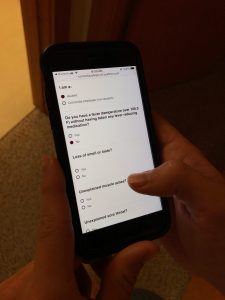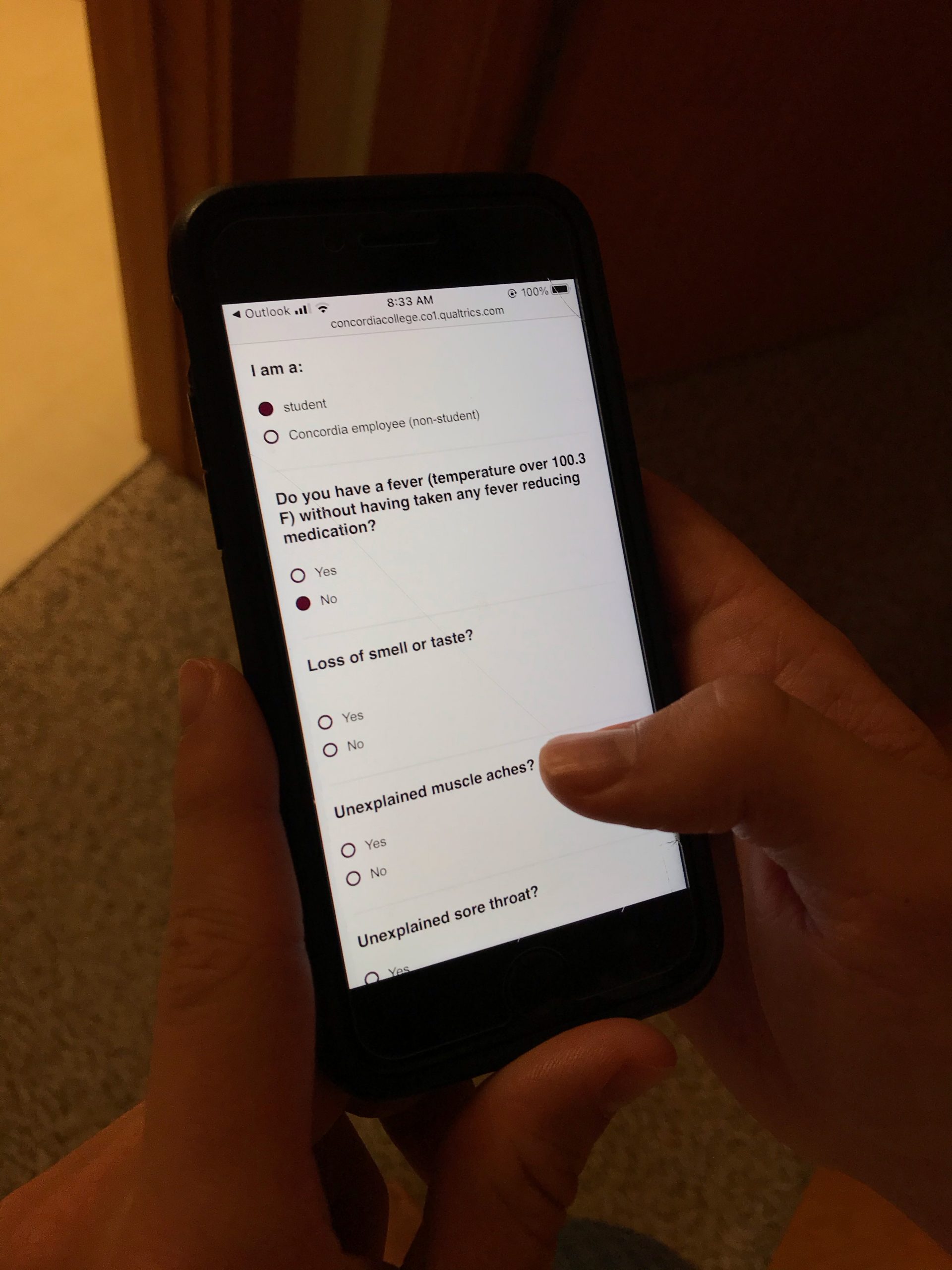Forty-nine percent. That is the percentage of Concordia students who have been consistently filling out the COVID Daily Symptom Check surveys that everyone on campus has received and been asked to complete since the beginning of this school year.

In a Cobweb Express email sent out on October 1, it was revealed the number of students filling out the daily symptom check on a consistent basis was just below half. Not only is the symptom check important for helping track and stop the spread of Covid, but it is also used as a risk assessment tool for lifting restrictions.
In the same email, the Emergency Response Team explained some reasons students should fill the survey out daily, as instructed:
“Two very specific examples of restrictions that could be changed if there were higher levels of completion are potentially allowing guests back into Residence Hall rooms and/or allowing more seating for dining on campus. Unless we see a daily increase in the number of students filling out the Daily Symptom Check, it’s unlikely we could make these two changes.”
Even though the daily email being sent out requests students to fill out the survey every day, students seem to have differing philosophies regarding the survey. Students like seniors Austin Habedank and Tom Raske say that they rarely step foot outside of their front door most days, so they don’t see a point to fill out the survey every day. Instead, they fill out the form prior to coming to campus, or plan on only reporting whether or not they have symptoms once they notice them. Neither of them have noticed any symptoms as of yet.
Other students, like first year student Lilli O’Brien fill out the survey every morning regardless of circumstances.
When asked what she thinks of only half of all students filling out the Daily Symptom Check, she said, “It’s a little disappointing. It can be hard to remember, but it’s important for everyone’s safety that we fill the survey out.”
O’Brien said despite the low participation numbers, she still thinks Concordia is doing a better job at handling the pandemic than the schools some of her friends are attending.
She said, “I feel lucky I am somewhere that takes COVID seriously,” in reference to how many students she sees wearing masks and following social distancing guidelines laid out by Concordia.
Although participation in the symptom check had dropped, the overall number of reported cases has also dropped, which may be a sign that the precautions put in place by the college are effective. O’Brien said she wants that trend to continue so we can return to having in person classes and she is “excited we can eventually get there.”
Wai Phyo Than, who is in his third year at Concordia, said he fills out his survey every day and takes his responsibility of completing the survey fairly seriously. He also said Concordia is doing a good job at keeping the case number down, but thinks there is more to be done.
“Concordia is a bit too kind,” Than said. “It seems like 50% of the students are given free roam with no consequences.”
He brought up examples of larger schools like Notre Dame or even NDSU which are seeing cases steadily rise as opposed to seeing a decline in active cases like Concordia has since hitting its peak in early September. Than thought Concordia being a smaller school made it more manageable to keep COVID cases under control. However, Than said he would like to see more precautions taken by the school. He suggested regular testing for students as well as 80%-90% of students completing the Daily COVID Symptom Check as opposed to just under 50% to give him more peace of mind about the safety of campus.

